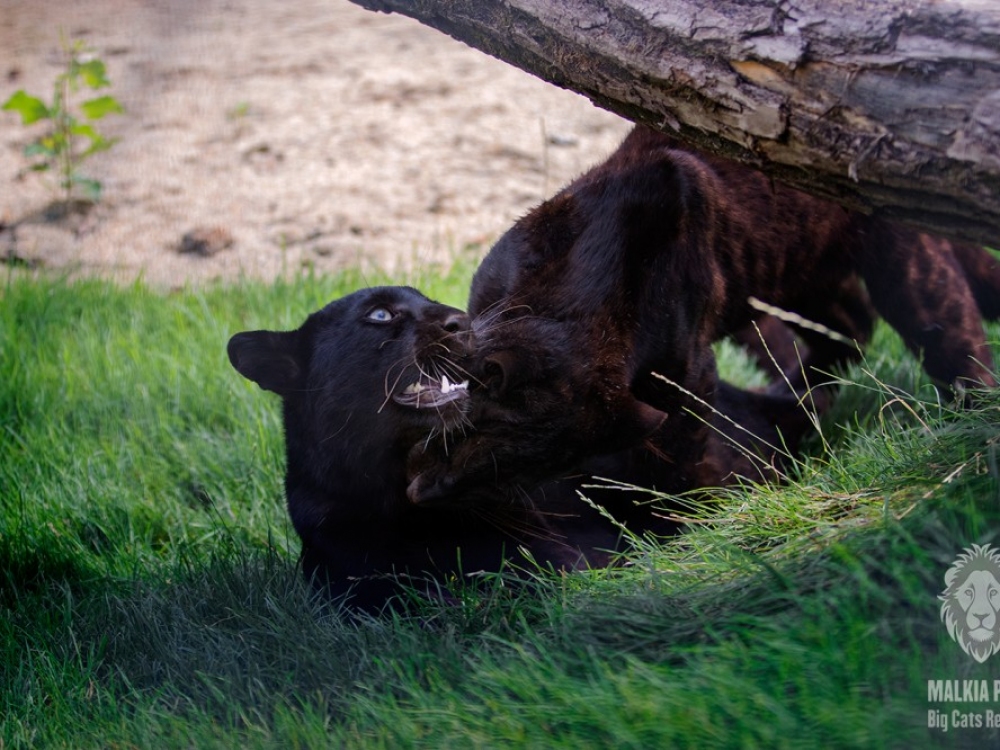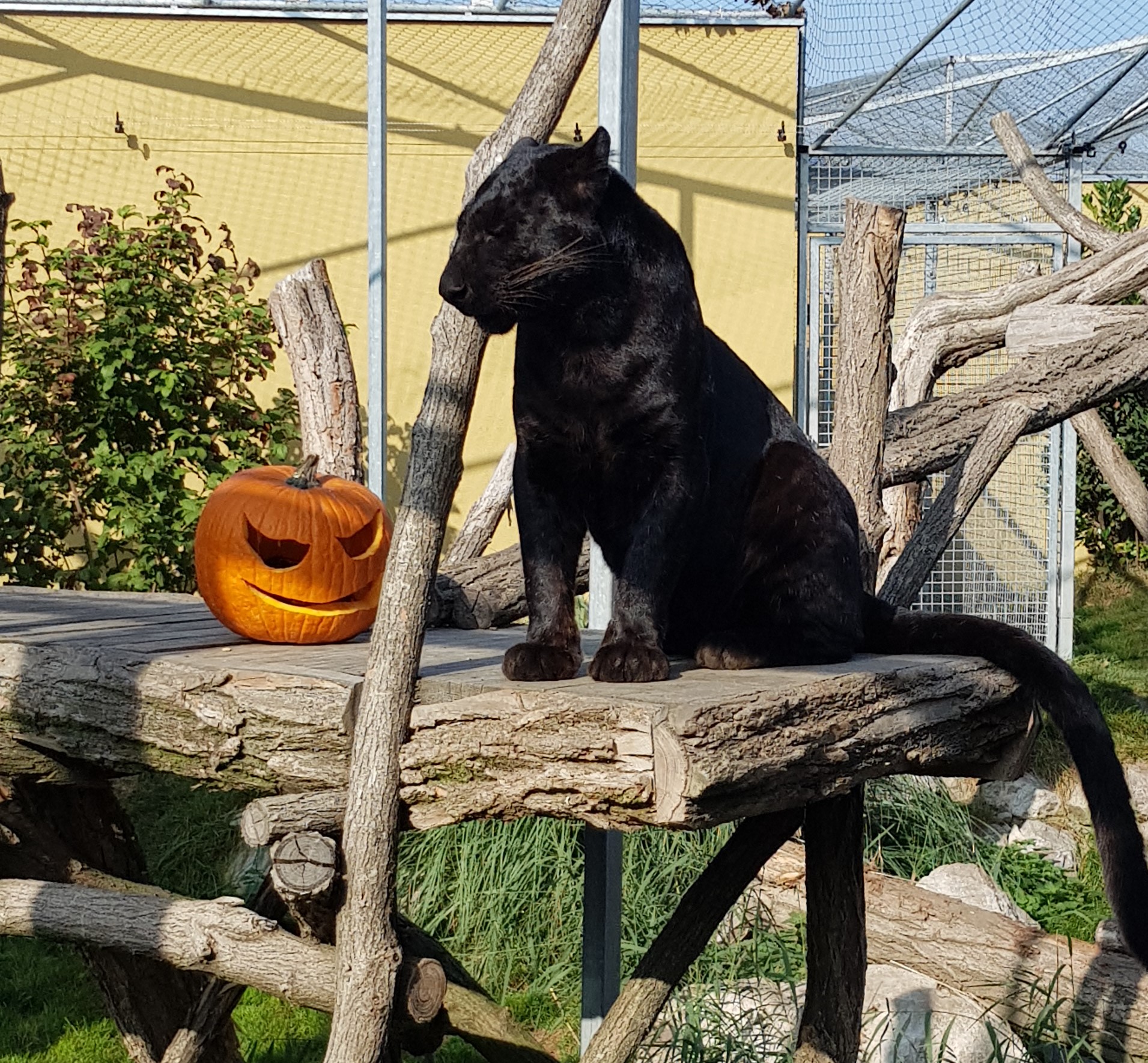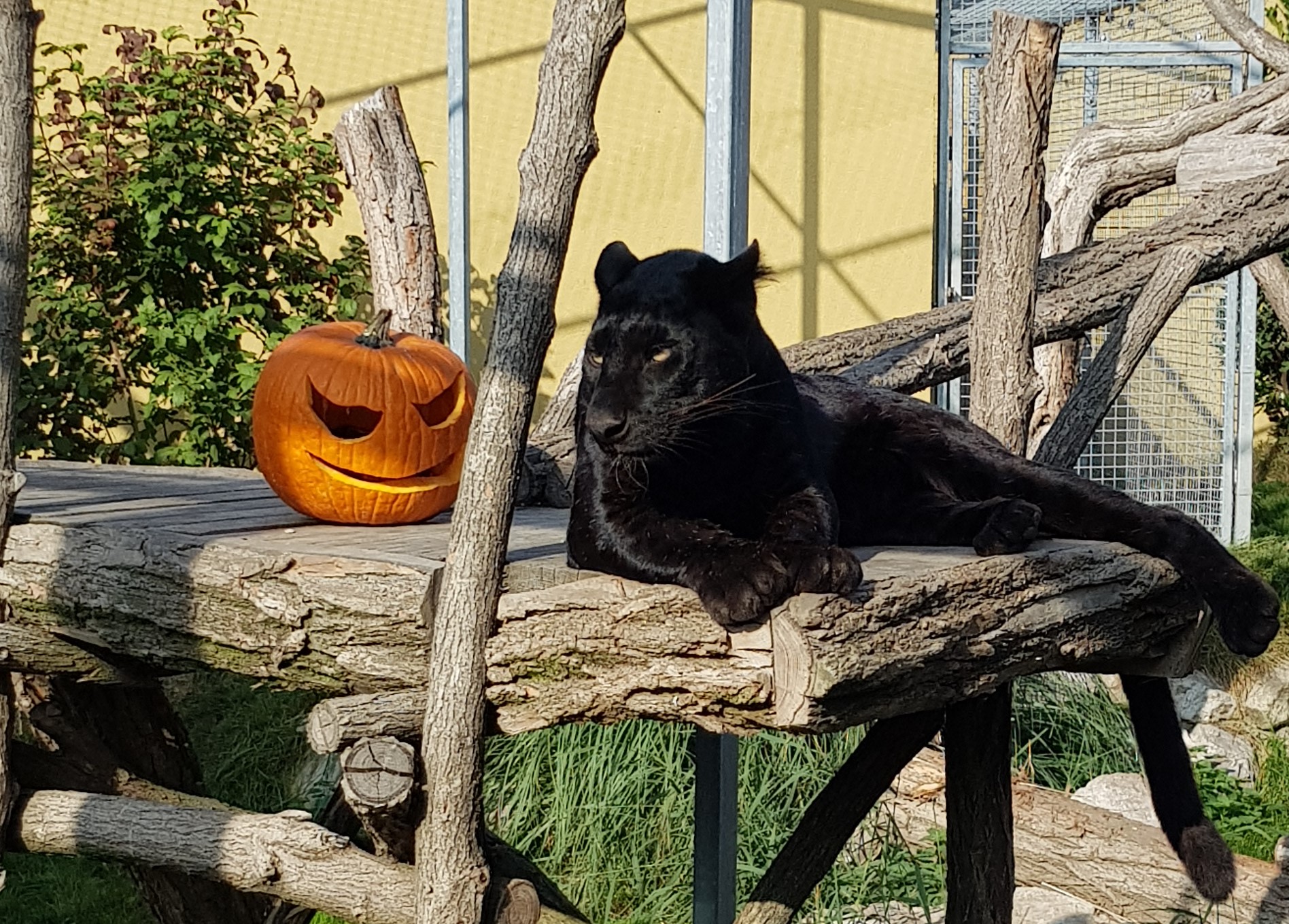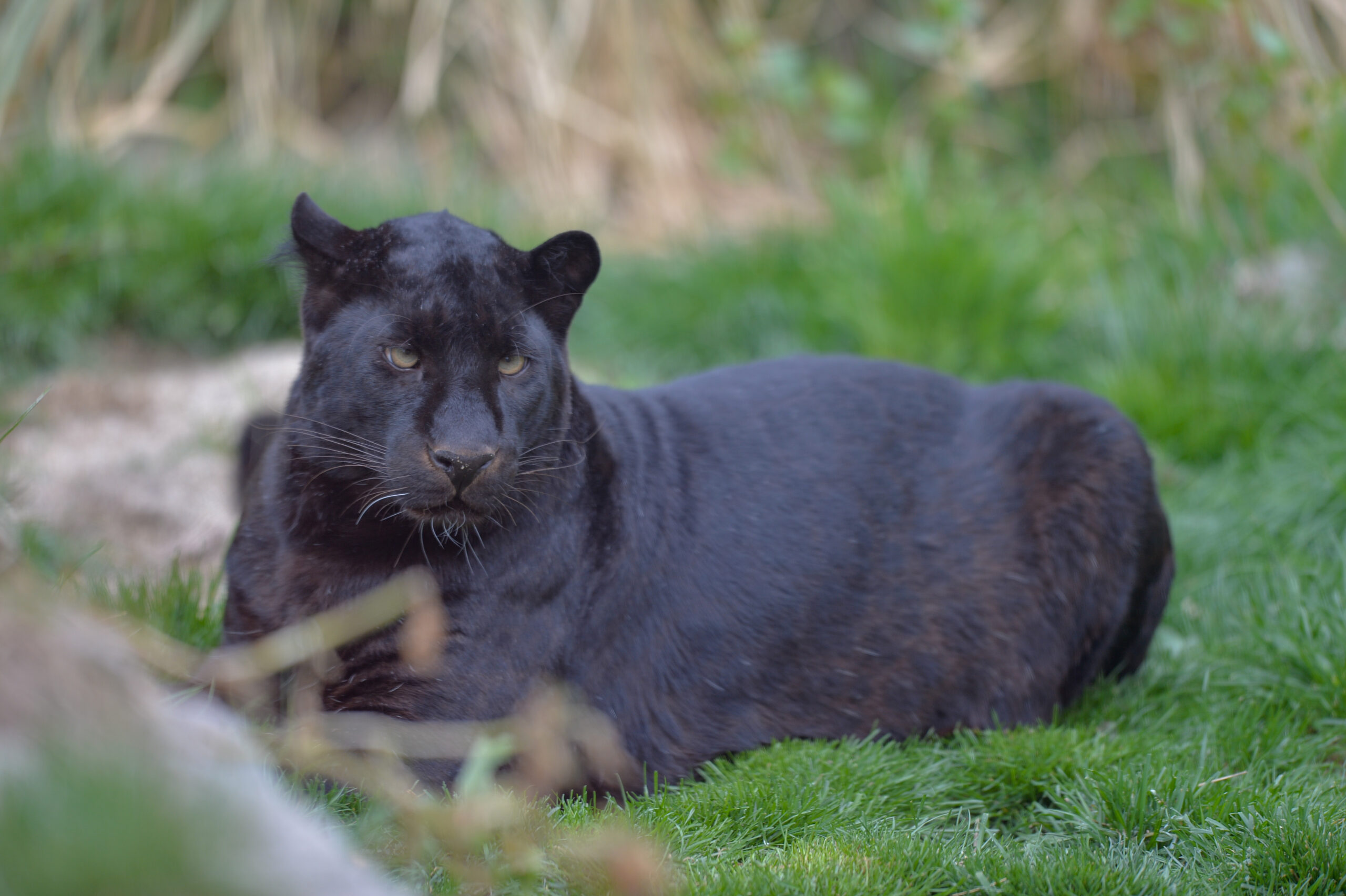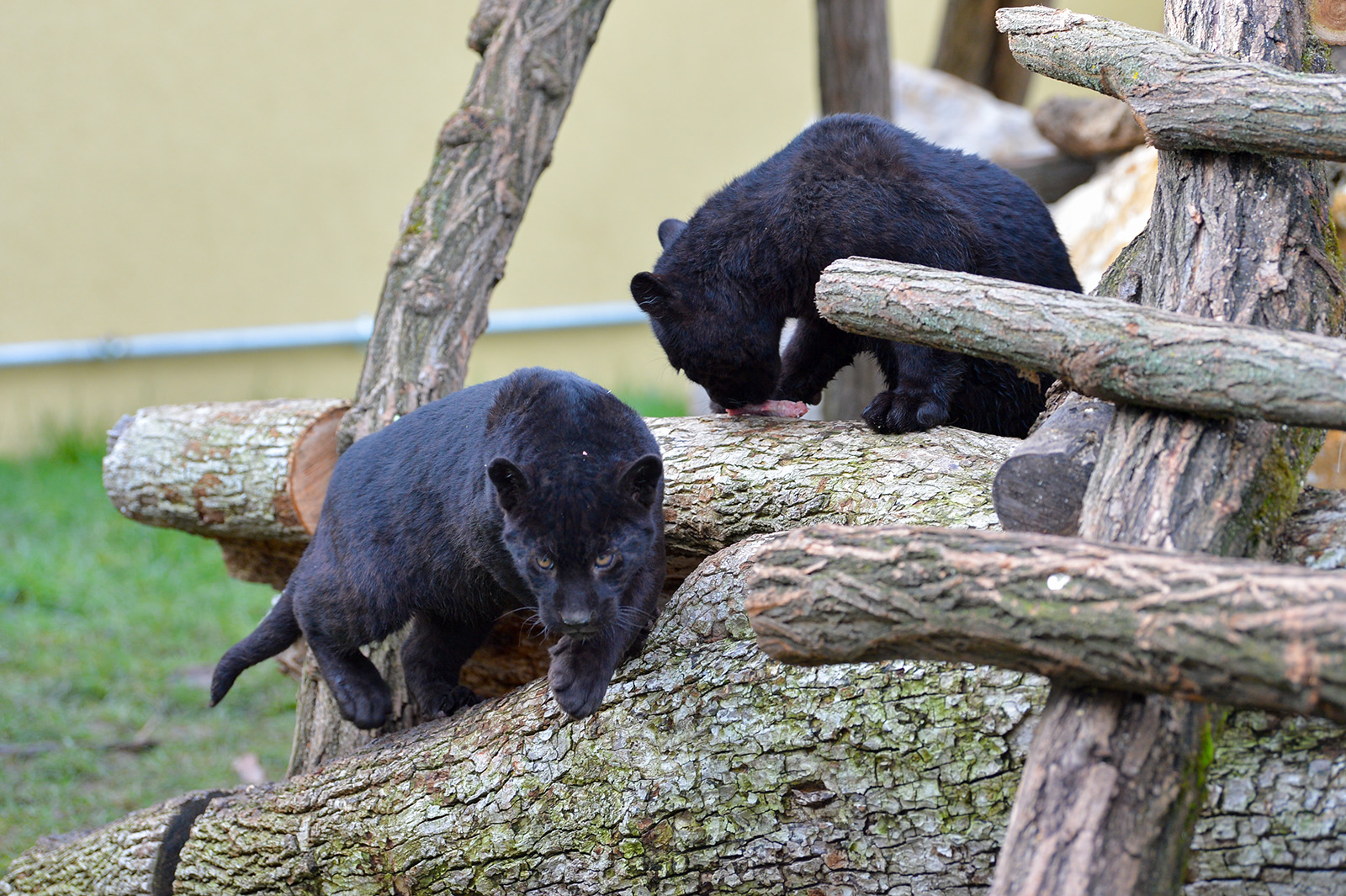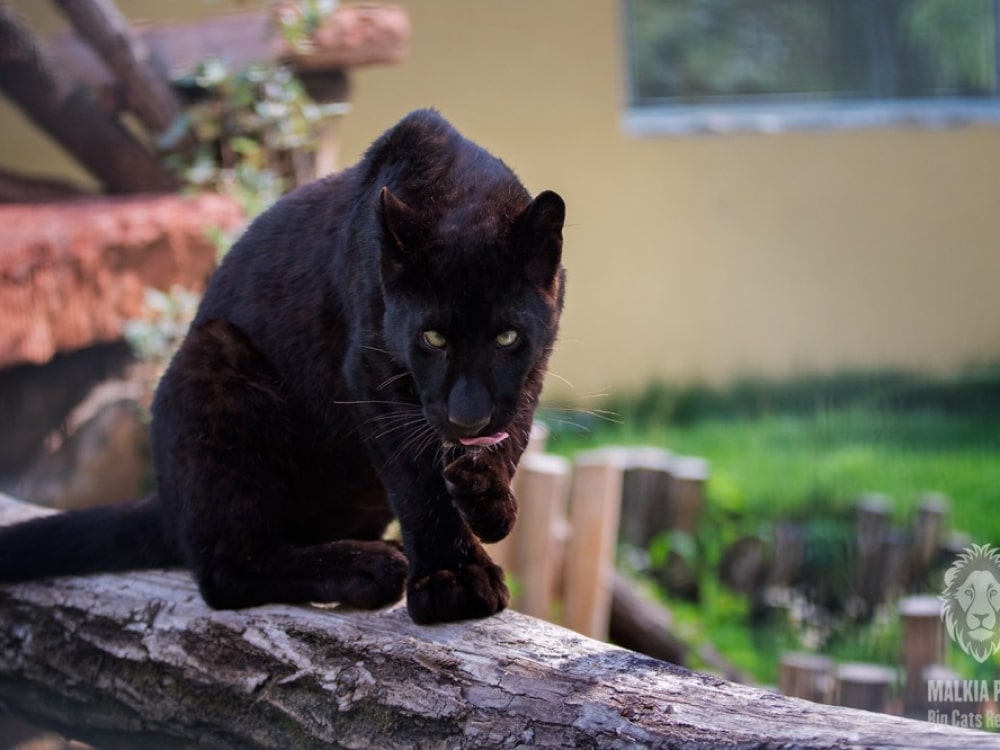The basic colour of its coat ranges from pale brown to black. The contrasting colouring and pattern of its fur allows the leopard to camouflage itself perfectly. It is almost invisible in the environment it inhabits.
Melanism occurs in the leopard. As a result of the genetic mutation, the skin and coat contain a lot of dark pigment-melanin. In deserts, leopards are creamy yellow, in grassy areas dark yellow. Melanistic – black – leopards are found mainly in moist dense forests. The black colouring does not bother it at all. With its excellent eyesight and hearing, the leopard with its extremely long touch-sensitive whiskers is perfectly equipped for night hunting.
It climbs well, has very strong scapular and foreleg muscles.
Solitary, territorial hunter. The male leopard meets the female only during the breeding season. After a relatively short gestation period of about three months, the female takes care of the young on her own. The young are born deaf, blind, and weighing only about 500 g. The eyes open at nine days, when the spots start to become visible. Until then, the young appear to be unicolour. The female and her young often change hiding places to avoid falling prey to lions, hyenas, or male leopards. Mostly two young survive, staying with their mother for two years while the mother teaches them hunting tactics.
When catching the prey, it climbs with it into the treetops (sometimes up to 6 meters high) so that other beasts (hyenas and jackals) would not steal it and eats it in peace. In nature, it performs a sanitary function – it hunts only sick, old, injured individuals, and young.
Leopard drinks as much as possible every day, but can go almost a month without water.
Leopards have an excellent sense of direction. The group, captured near Nairobi and relocated to Tsavo National Park, 320 km away, returned after a few weeks.
The so-called “black panthers” were once considered a separate species or subspecies. It is now clear that this is just a melanistic form of the leopard or jaguar. Even on a black substrate, the typical spots are clearly visible at a certain angle of light. A female can have both black and classically coloured young in her litter.
A leopard has twice better the hearing and six times better the vision of a human in the dark.
